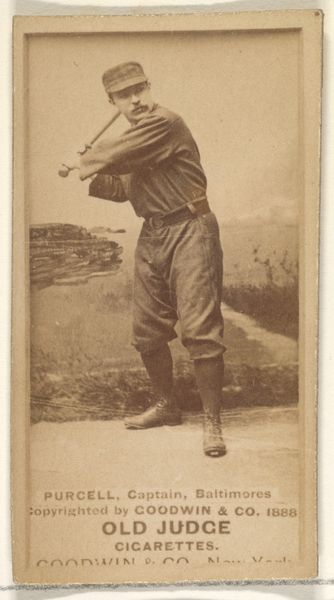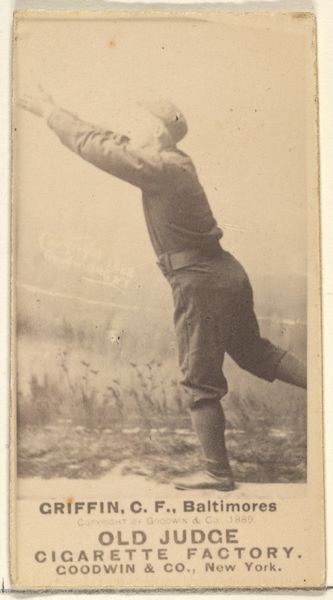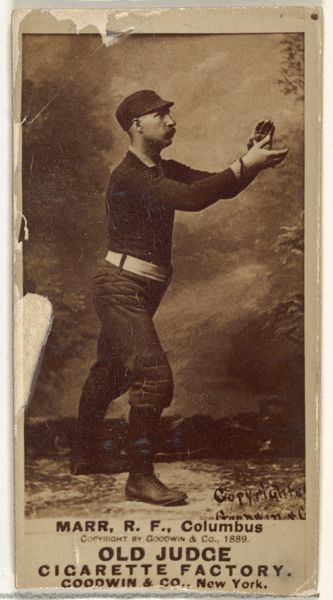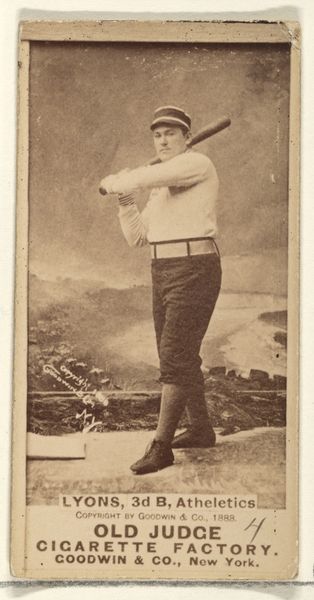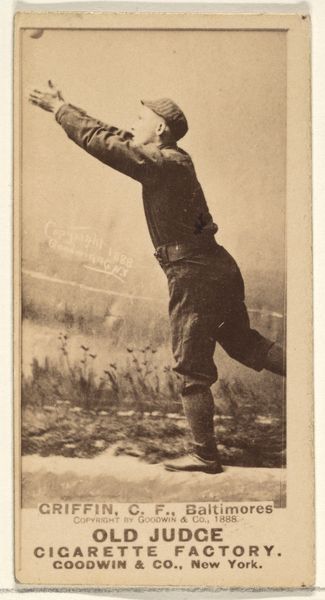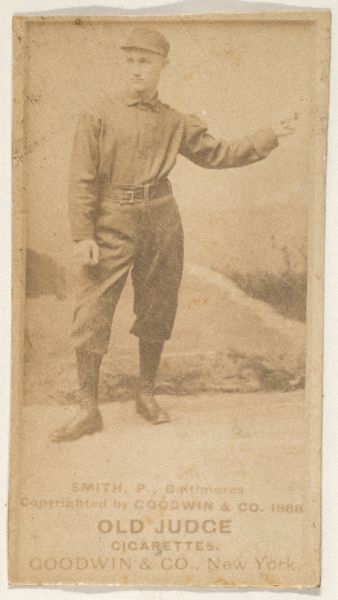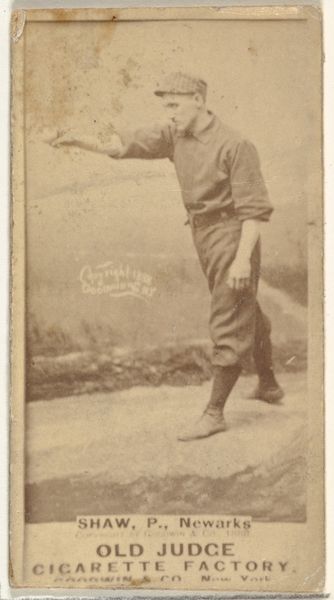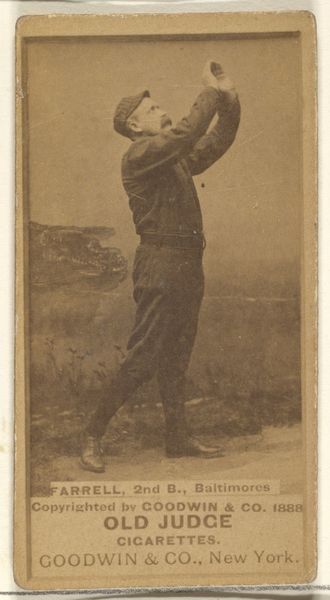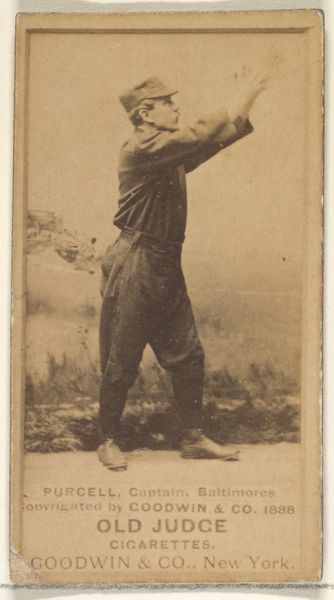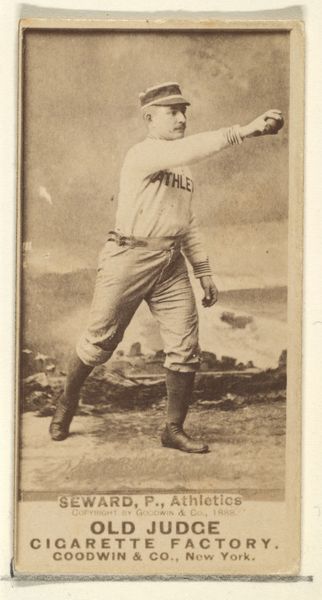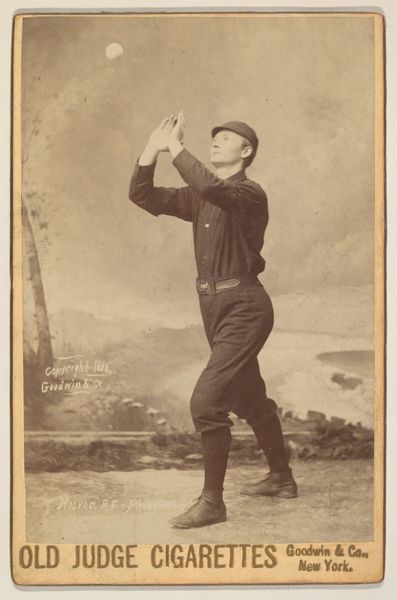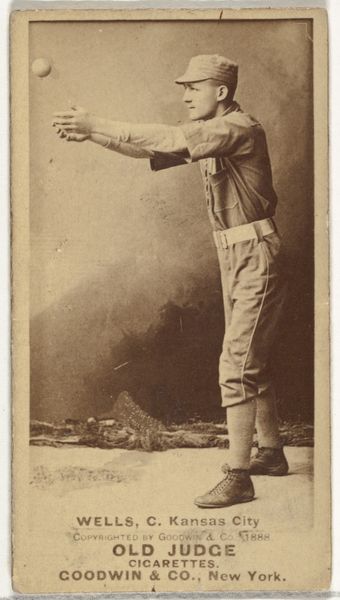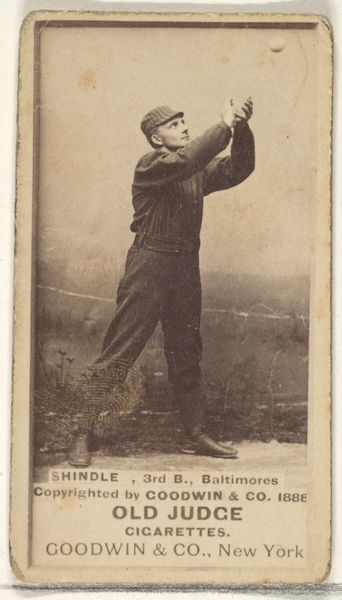
Hoover, Right Field, Philadelphia, from the Old Judge series (N172) for Old Judge Cigarettes 1887 - 1890
0:00
0:00
drawing, print, photography
#
portrait
#
drawing
# print
#
impressionism
#
baseball
#
photography
#
19th century
#
men
#
athlete
Dimensions: sheet: 2 11/16 x 1 3/8 in. (6.9 x 3.5 cm)
Copyright: Public Domain
Curator: Here we have "Hoover, Right Field, Philadelphia," from the Old Judge series of baseball cards, produced by Goodwin & Company between 1887 and 1890. Editor: It's intriguing. The sepia tone gives it a sense of nostalgia. The composition, with the player gazing upwards, makes you wonder what he’s looking at. It feels staged, almost like a theatrical performance. Curator: That staged quality is intentional. These cards were mass-produced as advertisements for Old Judge Cigarettes. Photography was still relatively new, so these kinds of commercial applications were quite innovative. The images would have been taken in a studio. Editor: That context changes everything. So, this image of "Hoover," whoever he was, isn't just about baseball; it’s also about marketing, about connecting this athlete with a brand, with a certain image of masculinity even. These early forms of advertising helped establish a rapport between sports, fame, and consumerism. Curator: Precisely. The N172 series, to which this card belongs, is one of the most extensive and well-known of the 19th-century baseball card sets. Goodwin & Company hired photographers to capture images of baseball players from different teams, aiming to capitalize on the growing popularity of the sport. Editor: So this card circulated a narrative not only about baseball players but also promoted harmful products such as cigarettes. The card participated in the making of public icons. Even his gaze skyward can now be seen as appealing to a certain American idealism tied to aspiration and achievement. The very medium participates in propagating these notions. Curator: The value of these cards as historical documents lies in what they tell us about the intersections of sport, commerce, and culture during that period. They demonstrate how photographic portraiture was harnessed for advertising, shaping public perceptions of athletes and promoting consumer products. Editor: Looking at the piece this way reveals much about image-making, identity, and enterprise during a critical transition in the modern era. Curator: Absolutely. "Hoover, Right Field, Philadelphia," embodies a key moment when cultural and consumerist ambitions took shape via visual imagery. Editor: Thanks, I see the card in an entirely different light now. It's unsettling to realize this quaint-seeming card operated to further commercial interests by exploiting cultural enthusiasm and social perceptions of celebrity and success.
Comments
No comments
Be the first to comment and join the conversation on the ultimate creative platform.

